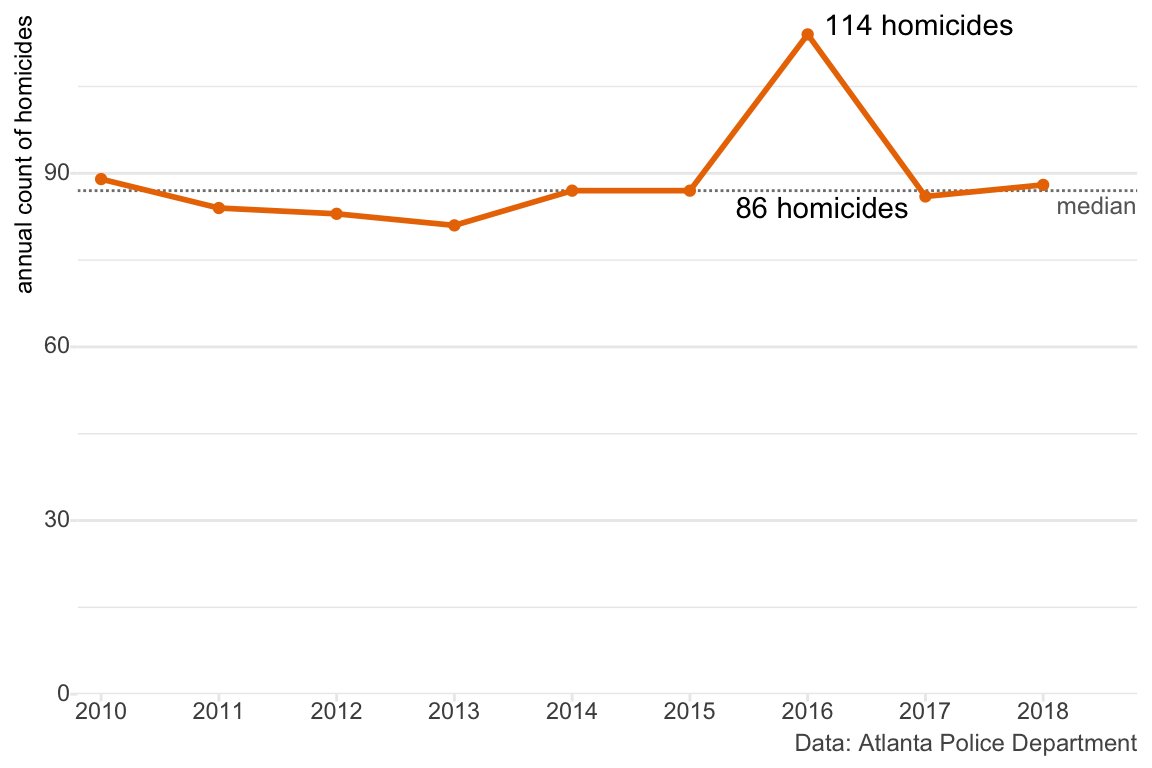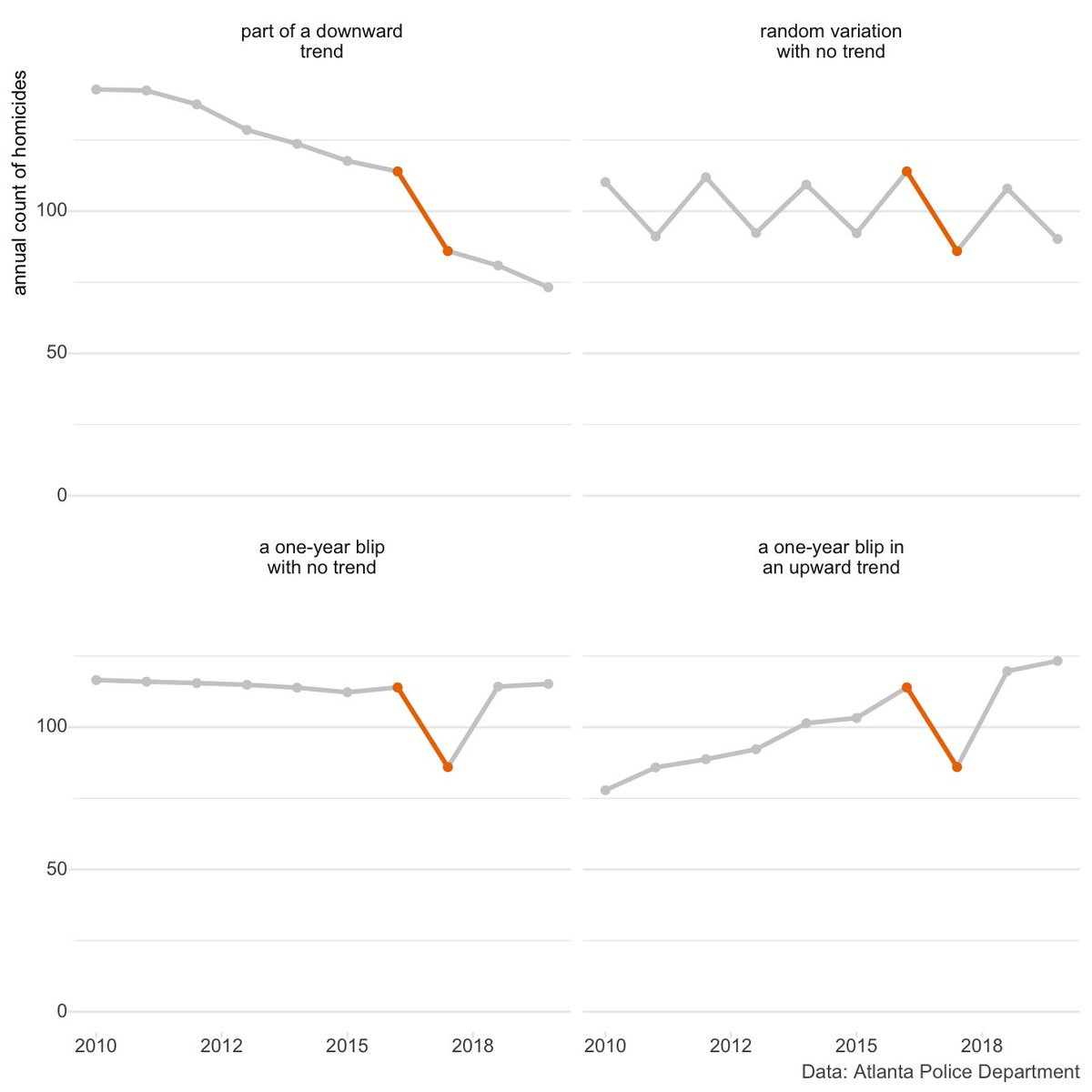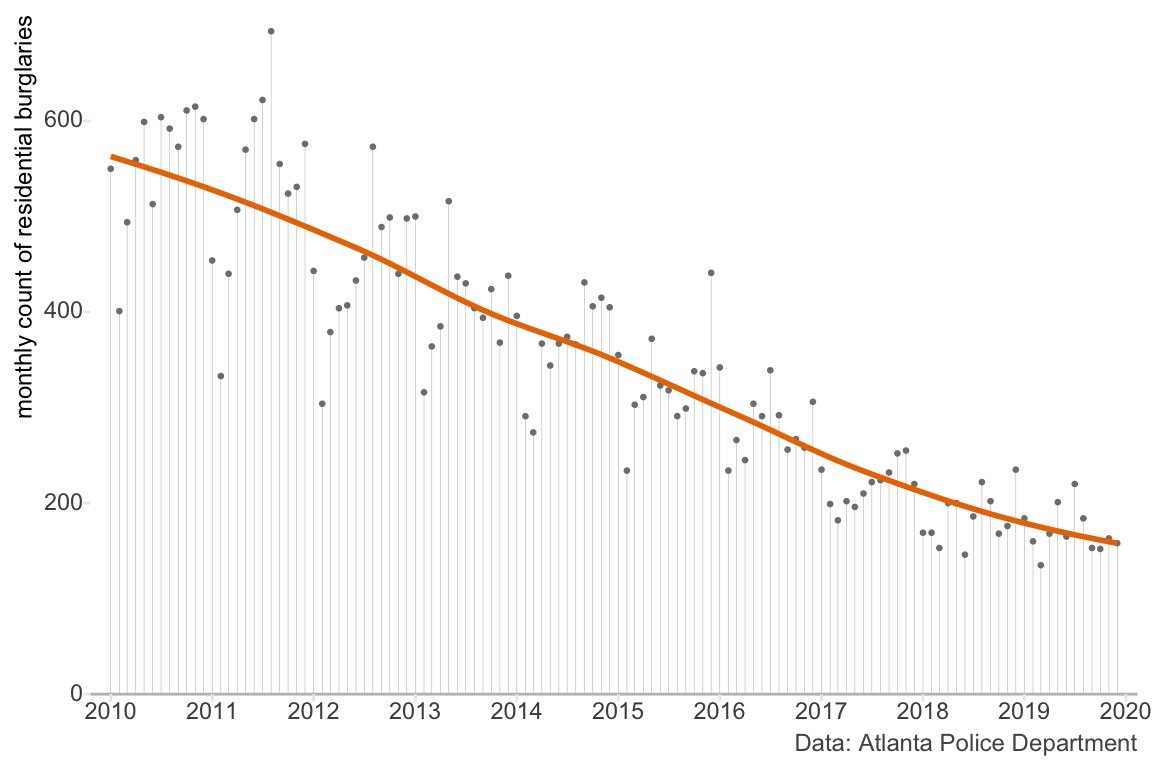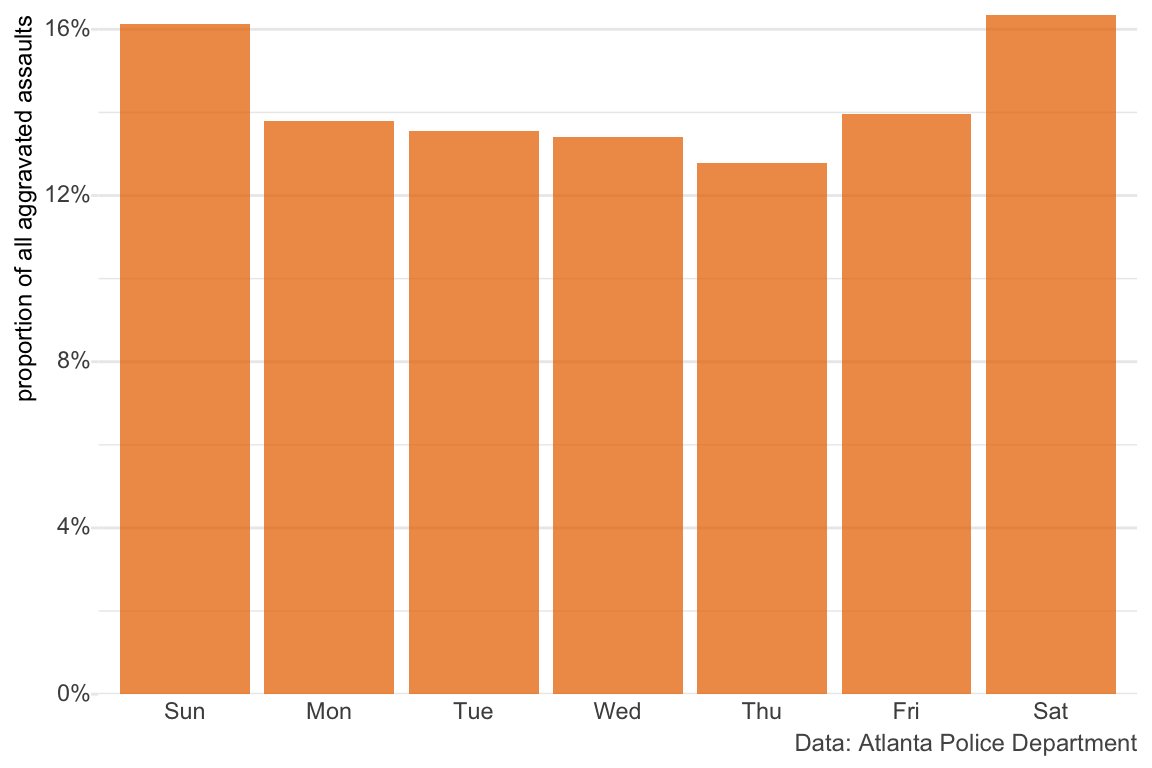Why you can& #39;t identify changes in crime by comparing this month to last month – a new post by me on the @TheSRAOrg blog: https://the-sra.org.uk/SRA/Blog/whyyoucantidentifychangesincrimebycomparingthismonthtolastmonth.aspx
And">https://the-sra.org.uk/SRA/Blog/... a thread …
And">https://the-sra.org.uk/SRA/Blog/... a thread …
Lots of people in the police, academia and the media need to know if crime has gone up or down, but there are at least five reasons why it& #39;s just not possible to reliably tell using binary (month-to-month or year-on-year) comparisons
Using Atlanta PD data for some examples …
Using Atlanta PD data for some examples …
1. Binary comparisons throw away too much information: a 25% drop in homicides in 2017 looks impressive on its own (& #39;great, whatever police are doing works!& #39;), but not when you include all the available information
Next time someone mentions a month-to-month or year-on-year change in crime, remember that a 25% year-on-year drop in crime might be part of any of these longer-term patterns:
2. Binary comparisons ignore any long-term trend in crime. An analyst using year-on-year comparison to work out if a burglary initiative was effective would get unreliable results unless they factored in that burglary has been decreasing by 13% per year for the past decade

 Read on Twitter
Read on Twitter





